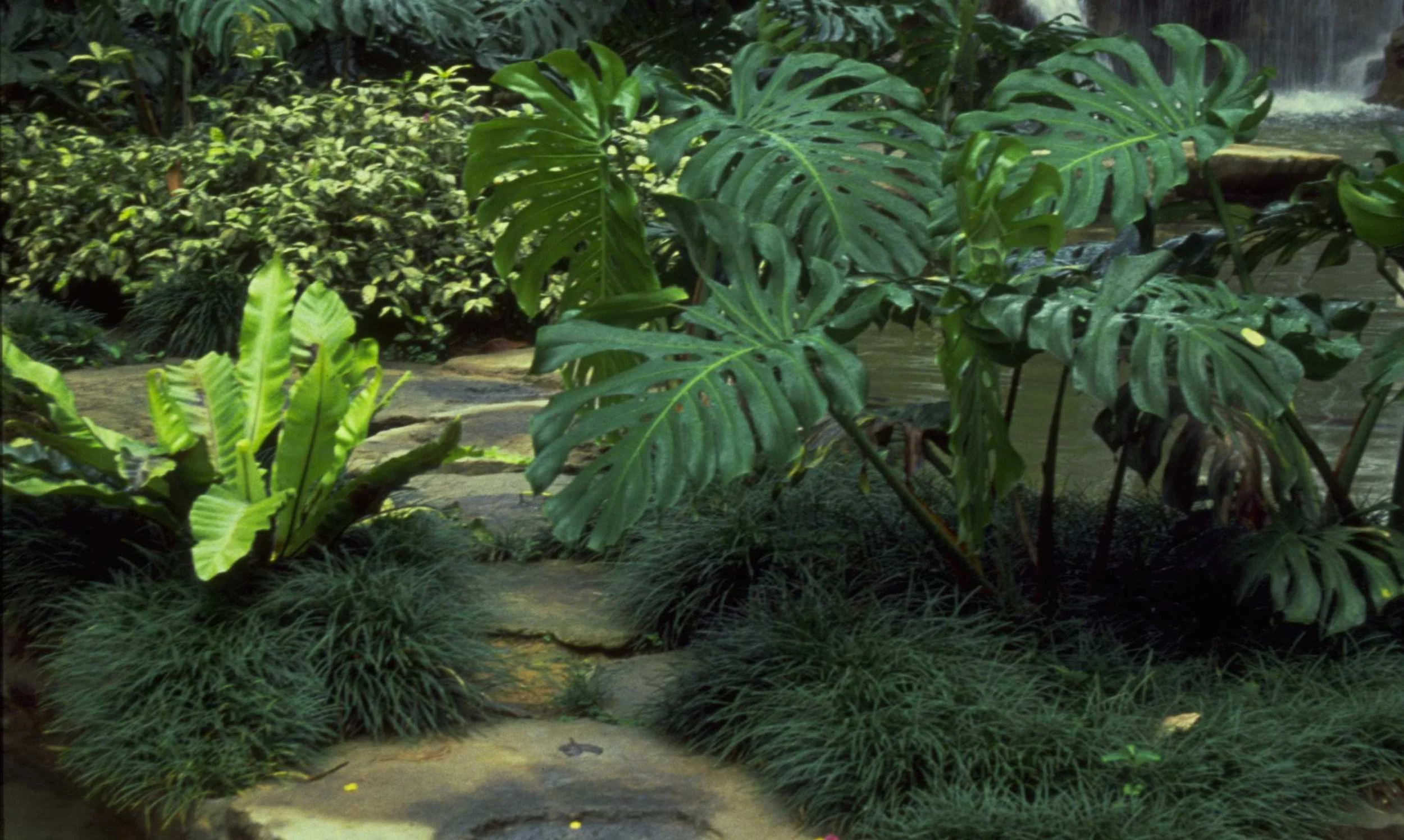Tropical Jungle in the midst of Busy Orchard Road.
Throughout the 1980's James Nicolay was the landscape architect for the Scotts Road Hyatt Extension as well as the hotel's entry renovations of that time.
The Hyatt's extension, built entirely atop a multi-story carpark, was designed as a lush, jungle-like landscape in an area surrounded by highrises on all sides. A lavish artificial rockwork grotto spans the five story difference between street level and landscape areas with numerous large trees and palms rising from tropical understory plantings. An extensive rooftop landscape with swimming pools, tennis courts and outdoor seating areas was designed in a naturalistic style that concealed the fact that the entire landscape sits atop a five story building. Large waterfalls cascade from level to level, creating a 'white noise' background to conceal traffic noise and the roar of nearby cooling towers. The waterfalls also conceal the hidden, tunnel-like entry to the carpark. And the streams and pools also create subtle barriers to foot traffic, preventing hotel guests from venturing too near the edges for safety.
Modeled in a stylized version of the rainforest of peninsular Malaysia, the grotto was designed as a visual focus for guests waiting at the lift lobbies of each floor. Visible from multiple levels, with stops at lobby level, multiple parking levels, swimming pool deck and multiple guest floors, the grotto also links the hotel's existing pool level with its new extension levels.
An early pioneer of on-structure landscape in Singapore, the project incorporated an extensive drainage system to account for monsoon rains but also featured the import of rainforest palms and plants indigenous to the nearby forests of Johore. It also featured plants not commonly used in landscape settings of the time, introducing a variety of plant species into the rapidly developing landscape industry of the time. Large-leafed Johannesteijsmannia altifrons palms were introduced to Singapore's landscape industry in this project, and less commonly found variegated yellow ginger, variegated pandanus, Dahlbergia, cockspur coral trees and several heliconias also became staples of projects in the region over the next several decades.


